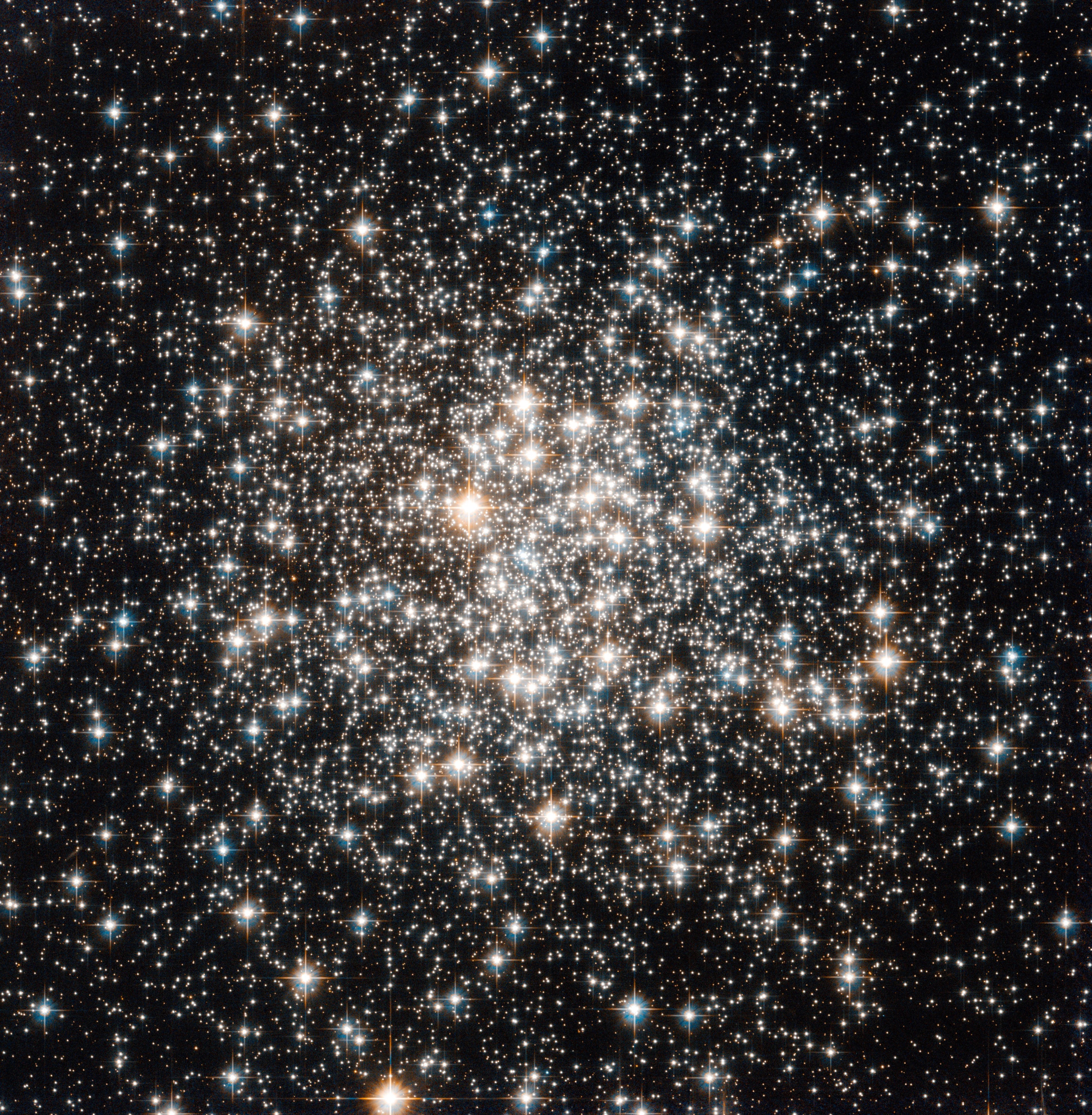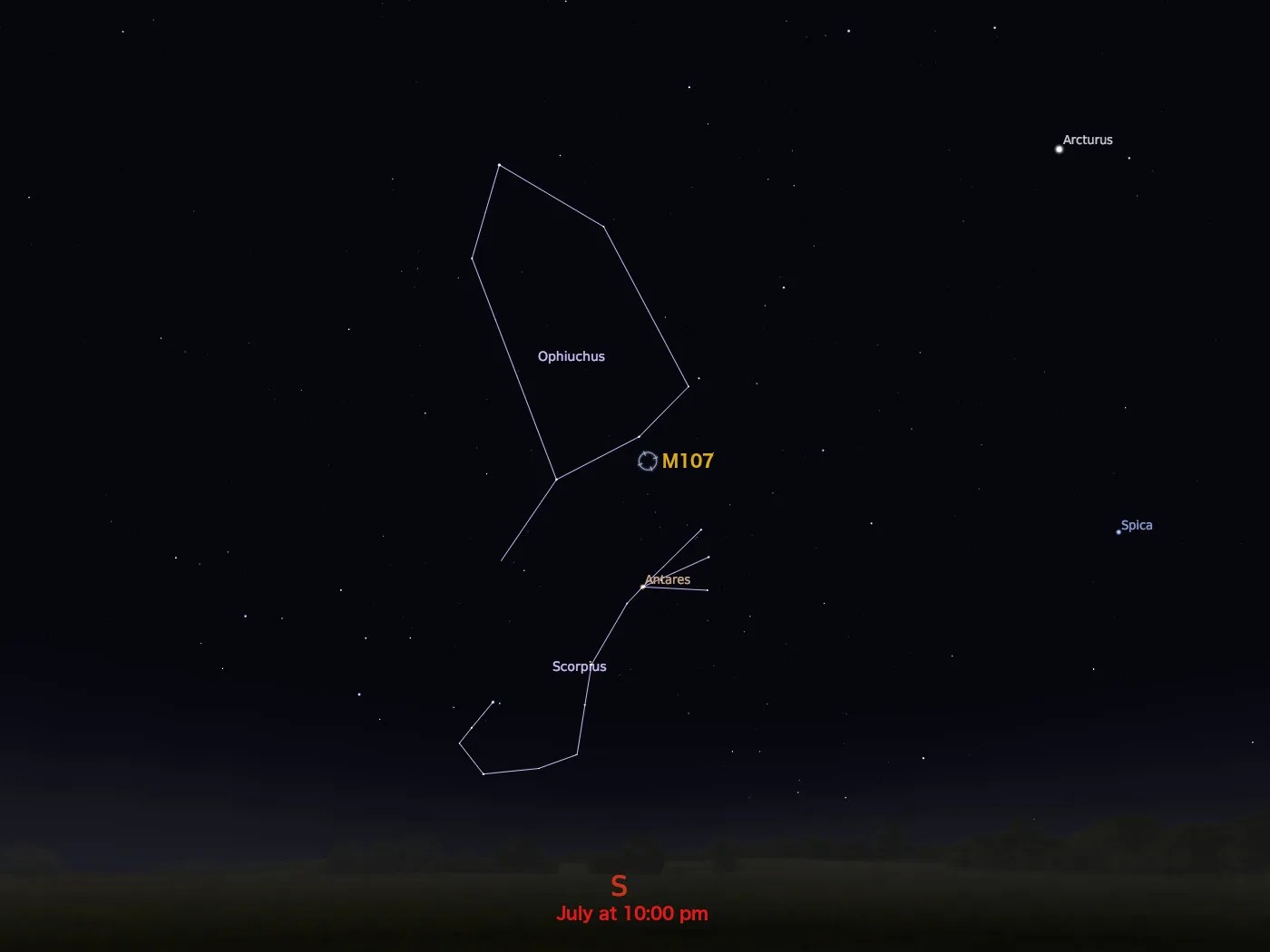Messier 107
The best time to spot Messier 107 through a small telescope or binoculars is in July.
Distance
20,000 light-years
Apparent Magnitude
8.9
constellation
Ophiuchus
object type
Globular Cluster

M107 is one of approximately 150 globular star clusters found around the disk of the Milky Way galaxy. These spherical collections each contain hundreds of thousands of extremely old stars and are among the oldest objects in the Milky Way. The origin of globular clusters and their impact on galactic evolution remain somewhat unclear, so astronomers continue to study them through pictures such as this one, obtained by Hubble using visible and infrared observations.
Discovered in 1782 by Pierre Méchain, a French astronomer and colleague of Charles Messier, M107 was the last Messier object to be found. M104 through M109 were all discovered by Méchain and were considered “Méchain objects” until 1947, when they were added to the Messier catalog.
M107 is located 20,000 light-years from Earth in the constellation Ophiuchus. It has an apparent magnitude of 8.9 and can be spotted through a small telescope most easily during July.
For more information about Hubble’s observations of M107, see:

Explore Hubble's Messier Catalog
The following pages contain some of Hubble’s best images of Messier objects.

Messier 1 (The Crab Nebula)
Better known as the Crab Nebula, Charles Messier originally mistook Messier 1 for Halley’s Comet, which inspired him to create…

Messier 2
Hubble's image of Messier 2 is comprised of visible and infrared wavelengths of light.

Messier 3
Messier 3 holds more than 500,000 stars.




